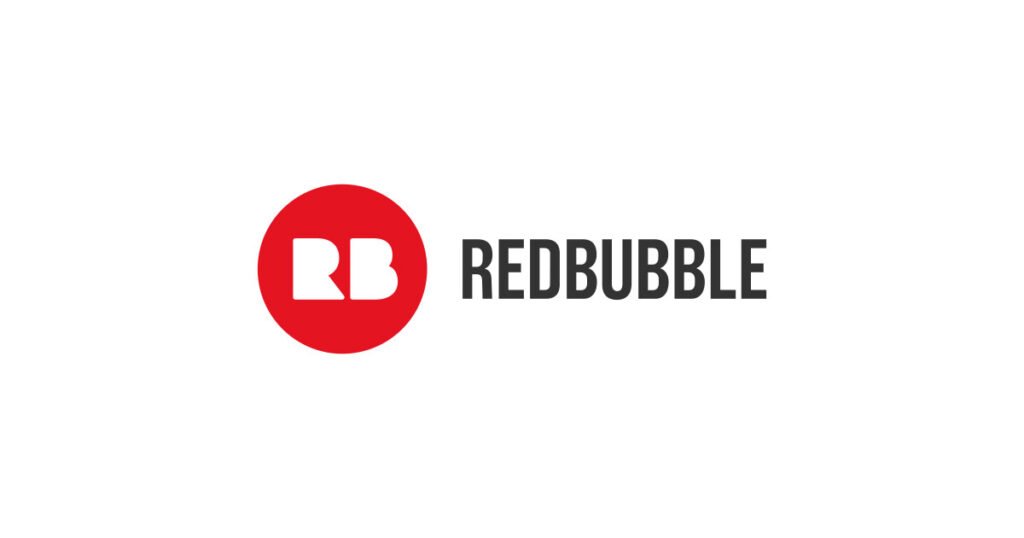How to Successfully Start a Sticker Business in 2024

A concise guide on launching a successful how to start a sticker business, covering essential steps from market research and niche definition to online store setup and marketing strategies. Emphasizing factors like quality designs, materials, and customer service, it underscores the importance of continuous evaluation and adaptation for sustainability. It also discusses the profitability of the sticker business, cost considerations, selling platforms, effective marketing tactics, and pricing strategies. Overall, it offers a comprehensive roadmap for aspiring entrepreneurs looking to turn their passion for design into a profitable venture in the sticker industry.
How to Start a Sticker Business
In recent years the demand for stickers has skyrocketed driven by the rise of personalization e-commerce and the creative aspirations of individuals and businesses alike. If you have a passion for design and entrepreneurship starting a sticker business could be an exciting venture. In this comprehensive guide we’ll walk you through the steps to launch your own successful sticker business.
Step 1: Market Research
Before diving into the sticker business it’s essential to conduct thorough market research. Identify your target audience understand their preferences and analyze your competitors. Explore the current trends in sticker design and determine what sets your stickers apart from others in the market.
Step 2: Define Your Niche
With the abundance of sticker options available finding your niche is crucial for success. Consider specializing in a particular theme such as pop culture nature or typography. Alternatively you could focus on serving niche markets such as gamers pet lovers or environmental activists. By catering to a specific audience, you can differentiate your brand and attract loyal customers.
Step 3: Create Unique Designs
The heart of any sticker business lies in its designs. Invest time and effort into creating original and eye-catching designs that resonate with your target audience. Whether you’re an illustrator graphic designer or digital artist unleash your creativity to develop a diverse range of sticker designs. Experiment with different styles colors and themes to appeal to a broad spectrum of customers.
Step 4: Source Quality Materials
The quality of your stickers is paramount to customer satisfaction and repeat business. Research reputable suppliers to source high-quality materials such as vinyl or paper for your stickers. Consider factors like durability waterproofing and adhesive strength to ensure your stickers meet or exceed customer expectations.
Step 5: Choose Your Printing Method
Selecting the right printing method is crucial for achieving the desired quality and aesthetics of your stickers. Common printing techniques for stickers include digital printing screen printing and offset printing. Each method has its pros and cons in terms of cost turnaround time and print quality. Evaluate your budget and production requirements to determine the most suitable printing method for your business.
Step 6: Set Up Your Online Store
In today’s digital age an online presence is essential for reaching a wider audience and driving sales. Set up an e-commerce website or establish a presence on popular online marketplaces like Etsy or Shopify. Customize your store with high-quality images of your stickers detailed product descriptions and secure payment options to enhance the shopping experience for your customers.
Step 7: Develop a Marketing Strategy
Launching your sticker business is only the beginning; marketing is key to attracting customers and generating sales. Utilize social media platforms like Instagram Facebook and Pinterest to showcase your designs engage with your audience and build a community around your brand. Collaborate with influencers participate in craft fairs or pop-up markets and explore paid advertising to increase visibility and drive traffic to your online store.
Step 8: Provide Excellent Customer Service
Building a successful sticker business goes beyond selling products; it’s about building relationships with your customers. Offer exceptional customer service by promptly responding to inquiries addressing concerns and ensuring a seamless purchasing experience. Encourage customer feedback and implement suggestions for continuous improvement.
Step 9: Evaluate and Adapt
As your sticker business grows regularly evaluate your performance and adapt your strategies accordingly. Monitor sales data analyze customer feedback and stay informed about industry trends to identify areas for improvement and opportunities for expansion. Stay agile and flexible to navigate challenges and seize new opportunities in the dynamic sticker market.
In conclusion starting a sticker business requires creativity dedication and strategic planning. By conducting market research defining your niche creating unique designs sourcing quality materials establishing an online presence implementing a marketing strategy providing excellent customer service and continuously evaluating and adapting you can build a successful and sustainable sticker business. So unleash your creativity turn your passion into profit and embark on the exciting journey of entrepreneurship in the world of stickers.
Is a Sticker Business Profitable?
Yes, a sticker business can be profitable especially if you effectively identify your target market offer unique designs and maintain a high level of quality in your products. Here are several factors that contribute to the profitability of a sticker business:
Low Startup Costs: Compared to many other businesses starting a sticker business typically requires minimal investment in equipment and materials especially if you choose to outsource printing initially.
High Profit Margins: Once you cover the initial costs of design and production the profit margins for stickers can be quite favorable. With proper pricing strategies you can generate a significant profit from each sale.
Scalability: As your business grows you can scale up production relatively easily by investing in additional equipment or outsourcing printing to larger facilities. This scalability allows you to increase revenue without exponentially increasing overhead costs.
Diverse Revenue Streams: In addition to selling stickers directly to consumers you can explore various revenue streams such as wholesale partnerships custom orders for businesses or events and licensing your designs for use on other products.
Repeat Customers and Brand Loyalty: If you consistently deliver high-quality stickers with appealing designs you can build a loyal customer base that returns for repeat purchases and recommends your brand to others.
Online Selling Opportunities: With the proliferation of e-commerce platforms and social media you have ample opportunities to reach customers worldwide without the need for a physical storefront. This allows you to tap into a global market and increase sales potential.
Flexibility and Creativity: As the owner of a sticker business you have the freedom to experiment with different designs themes and marketing strategies. This flexibility allows you to adapt to changing trends and customer preferences keeping your business relevant and competitive.
While there are potential challenges and considerations in running any business a well-executed sticker business can indeed be profitable particularly for those who are passionate about design and creativity. Success in the sticker industry often comes down to understanding your target market offering unique and appealing products and effectively marketing your brand to stand out in a competitive market.
How much does it cost to create a sticker?
The cost of creating a sticker can vary depending on several factors including the design complexity material quality printing method size and quantity. Here’s a breakdown of the typical costs associated with creating stickers:
Design Costs: If you’re not designing the stickers yourself you may need to hire a graphic designer or illustrator to create the artwork. The cost of design services can vary widely depending on factors such as the designer’s experience the complexity of the design and whether you’re purchasing exclusive rights to the artwork. Design fees can range from a few dollars for simple designs to hundreds or even thousands of dollars for intricate or custom artwork.
Material Costs: The primary materials needed for stickers are the sticker substrate (such as vinyl or paper) and the adhesive. The cost of materials depends on factors such as the material quality thickness and special features (e.g. waterproof or UV-resistant coatings). Generally vinyl stickers tend to be more durable and weather-resistant but also more expensive than paper stickers. The cost of materials per sticker can range from a few cents to a few dollars depending on the specifications.
Printing Costs: The cost of printing stickers depends on the printing method color complexity and size of the stickers. Common printing methods for stickers include digital printing screen printing and offset printing. Digital printing is typically more cost-effective for small to medium print runs while screen printing may be more economical for larger quantities. Printing costs can vary widely but generally range from a few cents to a few dollars per sticker depending on the specifications and printing method.
Setup Costs: Some printing methods such as screen printing may require setup costs for creating screens or plates. These setup costs are typically a one-time expense and are spread out over the total quantity of stickers produced. Setup costs can vary depending on the printing method and complexity of the design but may range from tens to hundreds of dollars.
Additional Costs: Depending on your business model there may be additional costs to consider such as packaging shipping marketing and overhead expenses (e.g. website hosting fees). These costs can vary depending on your specific requirements and business setup.
Overall the cost to create a sticker can range from a few cents to several dollars per sticker depending on various factors. It’s essential to carefully consider your budget desired quality and production requirements when planning your sticker business. Additionally obtaining quotes from printing vendors and suppliers can help you estimate the specific costs associated with creating your stickers.
How do I Make and Sell Stickers?
Making and selling stickers can be an enjoyable and potentially profitable venture. Here’s a step-by-step guide to help you get started:
Research and Planning
Before diving into sticker making and selling it’s essential to conduct thorough research and create a solid plan for your business.
Identify Your Target Market: Determine who your ideal customers are and understand their preferences interests and buying behaviors.
Define Your Niche: Decide on a specific niche or theme for your stickers to differentiate your brand and appeal to a particular audience.
Research Competitors: Analyze existing sticker businesses to identify gaps in the market understand pricing strategies and gather inspiration for your designs.
Set Clear Goals: Establish realistic goals for your sticker business such as sales targets revenue projections and growth milestones.
Design Your Stickers
Create unique and eye-catching designs that resonate with your target audience:
Choose Your Design Tools: Use graphic design software such as Adobe Illustrator Photoshop or free alternatives like Canva or Inkscape to create your designs.
Focus on Quality and Originality: Ensure your designs are original visually appealing and aligned with your brand identity. Consider experimenting with different styles colors and themes to cater to diverse tastes.
Test Your Designs: Gather feedback from friends family or potential customers to validate your designs and make any necessary revisions.
Source Materials and Production
Select high-quality materials and determine the most suitable production method for your stickers:
Choose Sticker Materials: Decide on the type of sticker material that best suits your designs and budget. Common options include vinyl paper and polyester.
Select Printing Method: Explore different printing methods such as digital printing screen printing or print-on-demand services based on your production volume budget and quality requirements.
Find Suppliers: Research and establish relationships with reliable suppliers for materials printing services and packaging.
Set Up Your Sales Channels
Create a platform to showcase and sell your stickers to potential customers:
Build an Online Store: Create an e-commerce website using platforms like Shopify Etsy or Big Cartel to showcase your stickers and facilitate online sales.
Utilize Online Marketplaces: List your stickers on popular online marketplaces such as Etsy Amazon Handmade eBay or Redbubble to reach a broader audience.
Leverage Social Media: Use social media platforms like Instagram Facebook Twitter and Pinterest to promote your stickers engage with customers and drive traffic to your online store.
Promote Your Sticker Business
Implement marketing strategies to increase visibility attract customers and generate sales:
Content Marketing: Create engaging content such as blog posts tutorials or behind-the-scenes videos to showcase your design process and connect with your audience.
Social Media Marketing: Share photos of your stickers run contests or giveaways and collaborate with influencers or other businesses to reach a larger audience.
Paid Advertising: Consider investing in paid advertising on social media platforms or Google Ads to target specific demographics and drive traffic to your online store.
Attend Events: Participate in craft fairs pop-up markets or conventions to showcase your stickers in person and network with potential customers and collaborators.
Provide Excellent Customer Service
Focus on delivering exceptional customer service to build trust foster loyalty and encourage repeat business:
Respond Promptly: Be responsive to customer inquiries feedback and concerns via email social media or live chat.
Offer Personalized Touches: Include handwritten thank-you notes stickers or other small surprises with orders to delight customers and leave a positive impression.
Handle Returns and Issues Professionally: Address any issues or complaints promptly and strive to resolve them to the customer’s satisfaction.
Analyze and Adapt
Regularly monitor your sales customer feedback and marketing efforts to assess your business performance and make informed decisions for growth:
Track Metrics: Monitor key performance indicators (KPIs) such as sales volume conversion rate website traffic and customer engagement metrics to evaluate the effectiveness of your strategies.
Seek Feedback: Encourage customers to provide feedback through surveys reviews or social media polls to gain insights into their preferences and improve your products and services.
Stay Flexible: Remain adaptable and open to adjusting your strategies products or pricing based on market trends customer feedback and business goals.
By following these steps and staying dedicated to delivering quality products and exceptional customer experiences you can build a successful sticker business and turn your passion for design into a profitable venture.
Where can I sell my stickers?
There are numerous platforms and channels where you can sell your stickers to reach a wider audience. Here are some popular options to consider:
Your Own Website: Building your own e-commerce website gives you full control over your brand and customer experience. Platforms like Shopify WooCommerce (for WordPress) Big Cartel and Squarespace offer user-friendly tools to set up and manage your online store.
Online Marketplaces:
Etsy: Etsy is a popular marketplace for handmade and vintage items including stickers. It provides a platform to reach a large audience of buyers interested in unique and creative products.

Amazon Handmade: Amazon Handmade is a marketplace specifically for handmade items. You can list your stickers alongside other handmade goods and leverage Amazon’s vast customer base.
Redbubble: Redbubble is a print-on-demand platform where you can upload your designs and sell them as stickers as well as on other products like apparel home decor and accessories.

Social Media Platforms: Utilize social media platforms to showcase your stickers and engage with potential customers. Platforms like Instagram Facebook Pinterest and TikTok are great for visual marketing and building a community around your brand. You can also use social commerce features to sell directly through these platforms.
Craft Fairs and Markets: Participating in local craft fairs markets and pop-up events allows you to showcase your stickers in person and connect with customers face-to-face. Check community event listings or contact local organizers to find opportunities in your area.
Wholesale and Retail Partnerships: Approach local boutiques gift shops bookstores and other retail establishments to inquire about selling your stickers on consignment or wholesale. You can also explore online wholesale marketplaces like Faire or Handshake to connect with retailers.
Your Own Physical Store: If you have a brick-and-mortar retail space whether it’s a standalone store or a shared studio/gallery you can sell your stickers directly to customers alongside other merchandise.
Personal Website or Blog: If you have a personal website or blog with a dedicated audience you can sell your stickers as part of your merchandise offerings. This approach works well if you already have an established online presence and a loyal following.
When deciding where to sell your stickers consider your target audience budget production capacity and marketing efforts. It’s often beneficial to diversify your sales channels to reach different customer segments and maximize your sales potential. Experiment with different platforms and strategies to find what works best for your sticker business.
How do I market my stickers?
Marketing your stickers effectively is crucial for reaching your target audience generating sales and building brand awareness. Here are some strategies to consider when marketing your stickers:
Create Compelling Product Photography: Invest time and effort into creating high-quality images of your stickers. Use professional photography equipment or hire a photographer if possible. Showcase your stickers in various settings and angles to highlight their features and appeal to potential customers.
Utilize Social Media Platforms: Leverage the power of social media to showcase your stickers and engage with your audience. Choose platforms where your target audience is most active such as Instagram Facebook Pinterest and TikTok. Share visually appealing photos and videos of your stickers behind-the-scenes content customer testimonials and special promotions. Use relevant hashtags to increase discoverability and engage with followers through comments likes and direct messages.
Run Contests and Giveaways: Organize contests or giveaways on social media to increase engagement attract new followers and generate buzz around your stickers. Encourage participants to share your posts tag friends or repost your content for a chance to win free stickers or other prizes. This can help expand your reach and grow your audience organically.
Collaborate with Influencers and Brand Ambassadors: Partner with influencers bloggers or artists in your niche to promote your stickers to their followers. Look for influencers whose values and aesthetic align with your brand and negotiate collaborations that benefit both parties. Consider offering free stickers affiliate commissions or other incentives to incentivize influencers to promote your products authentically.
Attend Events and Trade Shows: Participate in craft fairs pop-up markets conventions and other events relevant to your target market. Set up a booth or table to showcase your stickers in person engage with attendees and network with potential customers and collaborators. Consider offering exclusive discounts or promotions for event attendees to drive sales.
Optimize Your Website for SEO: Ensure your website is optimized for search engines to improve its visibility and attract organic traffic. Use relevant keywords meta tags and descriptions throughout your website including product titles descriptions and image alt texts. Publish blog posts tutorials or other content related to stickers to attract visitors interested in your niche.
Offer Special Promotions and Discounts: Run limited-time promotions discounts or bundle deals to incentivize customers to purchase your stickers. Use urgency and scarcity tactics to encourage immediate action such as offering discounts for a limited number of stickers or during specific holidays or events.
Engage with Your Audience: Foster a sense of community and connection with your audience by actively engaging with them on social media and other channels. Respond promptly to comments messages and inquiries and encourage feedback and conversation. Show appreciation for your customers by featuring user-generated content testimonials or shoutouts on your social media profiles.
Collaborate with Other Brands or Artists: Partner with complementary brands artists or creators to cross-promote each other’s products and reach new audiences. Consider co-designing sticker collections hosting joint giveaways or contests or participating in collaborative projects or events.
Collect and Share Customer Reviews: Encourage satisfied customers to leave reviews and testimonials about their experience with your stickers. Display these reviews prominently on your website and social media profiles to build trust and credibility with potential customers.
By implementing these marketing strategies and staying consistent with your efforts you can effectively promote your stickers attract customers and grow your business over time. Tailor your marketing approach to your target audience and experiment with different tactics to identify what resonates best with your customers.
Can I sell stickers I made on Canva?
Yes, you can sell stickers you create on Canva but there are some important considerations to keep in mind.
Copyright and Licensing: Ensure that any images graphics or elements you use in your designs on Canva are either your own original creations or properly licensed for commercial use. Using copyrighted material without permission could result in legal issues.
Canva’s Terms of Use: Review Canva’s terms of use and licensing agreements to understand their policies regarding the commercial use of designs created on their platform. Canva offers both free and paid subscription plans and the terms may vary depending on the plan you’re using.
Customization and Originality: While Canva provides a wide range of templates and design elements it’s essential to customize your designs and add your own unique touches to ensure they stand out and avoid any potential copyright issues. Aim to create original and distinctive designs that appeal to your target audience.
Quality and Resolution: Ensure that your designs are of high quality and resolution suitable for printing as stickers. Canva allows you to download designs in various file formats including PNG which is commonly used for printing.
Printing and Production: Once you’ve created your sticker designs on Canva you’ll need to have them printed and produced. You can either print them yourself if you have the necessary equipment and materials or you can use a professional printing service. Consider factors such as printing method materials and cost when choosing a printing option.
Selling Platforms: Decide where you’ll sell your stickers whether it’s through your own website online marketplaces like Etsy or Redbubble or other channels. Ensure that you comply with the platform’s policies and guidelines regarding the sale of stickers and intellectual property rights.
Marketing and Promotion: Once your stickers are ready for sale invest time and effort into marketing and promoting them to reach your target audience. Utilize social media email marketing collaborations and other strategies to increase visibility and drive sales.
By following these guidelines and ensuring that you comply with copyright laws and licensing agreements you can sell stickers you create on Canva and turn your designs into a profitable business venture.
How much should you charge for a sticker?
Determining the appropriate price for your stickers involves considering various factors including production costs market demand perceived value and competitive pricing. Here’s a step-by-step approach to help you determine the right pricing strategy for your stickers:
Calculate Production Costs:
Material Costs: Determine the cost of materials used to produce each sticker including the sticker substrate (vinyl paper etc.) and adhesive.
Printing Costs: If you’re outsourcing printing calculate the cost per sticker based on the printing method quantity and any setup fees.
Design Costs: If you’ve hired a designer or purchased design assets factor in the cost of design services.
Consider Overhead and Operating Expenses:
Factor in any additional costs associated with running your sticker business such as website hosting fees marketing expenses packaging materials and shipping costs.
Determine Your Desired Profit Margin:
Decide on the profit margin you want to achieve for each sticker sale. This will depend on your business goals market positioning and perceived value of your stickers.
Consider industry standards and typical profit margins for similar products.
Research Market Prices and Competitors:
Analyze the prices of stickers sold by competitors in your niche or target market.
Consider the quality of their stickers production methods and packaging when comparing prices.
Aim to set your prices competitively while still maintaining a reasonable profit margin.
Factor in Perceived Value and Customer Willingness to Pay:
Assess the perceived value of your stickers based on factors such as design uniqueness quality and relevance to your target audience.
Consider conducting market research or gathering feedback from potential customers to gauge their willingness to pay for your stickers.
Test Different Price Points:
Experiment with different price points to see how they affect sales and profitability.
Consider offering discounts or promotions to incentivize purchases and attract new customers.
Evaluate and Adjust Prices as Needed:
Monitor sales data customer feedback and market trends to evaluate the effectiveness of your pricing strategy.
Be prepared to adjust your prices periodically based on changes in production costs demand or competitive landscape.
Example Calculation:
Let’s say your total production cost per sticker (including materials printing and design) is $0.50.
You want to achieve a profit margin of 50% so you add $0.50 as your desired profit.
Your total cost per sticker is $1.00.
Based on market research and competition analysis you determine that similar stickers are priced between $2.00 and $3.00.
You decide to price your stickers competitively at $2.50 each.
Remember that pricing is not set in stone and may need adjustment over time based on various factors. It’s essential to strike a balance between profitability and competitiveness while ensuring that your prices align with the perceived value of your stickers in the market. Regularly review and adjust your pricing strategy as needed to optimize sales and maximize profitability.
Summary:
A concise guide on launching a successful sticker business, covering essential steps from market research and niche definition to online store setup and marketing strategies. Emphasizing factors like quality designs, materials, and customer service, it underscores the importance of continuous evaluation and adaptation for sustainability. It also discusses the profitability of the sticker business, cost considerations, selling platforms, effective marketing tactics, and pricing strategies. Overall, it offers a comprehensive roadmap for aspiring entrepreneurs looking to turn their passion for design into a profitable venture in the sticker industry.





Thanks for sharing. I read many of your blog posts, cool, your blog is very good.
Cyberchase is an animated science fantasy children’s television series that airs on PBS Kids. The series centers around three children from Earth: Jackie, Matt and Inez, who are brought into Cyberspace, a digital universe, in order to protect it from the villainous Hacker (Christopher Lloyd).[4] They are able to foil Hacker’s schemes by means of problem-solving skills in conjunction with basic math, environmental science and wellness. In Cyberspace, they meet Digit (Gilbert Gottfried for the first 13 seasons, Ron Pardo since season 14), a “cybird” who helps them on their missions.[5]